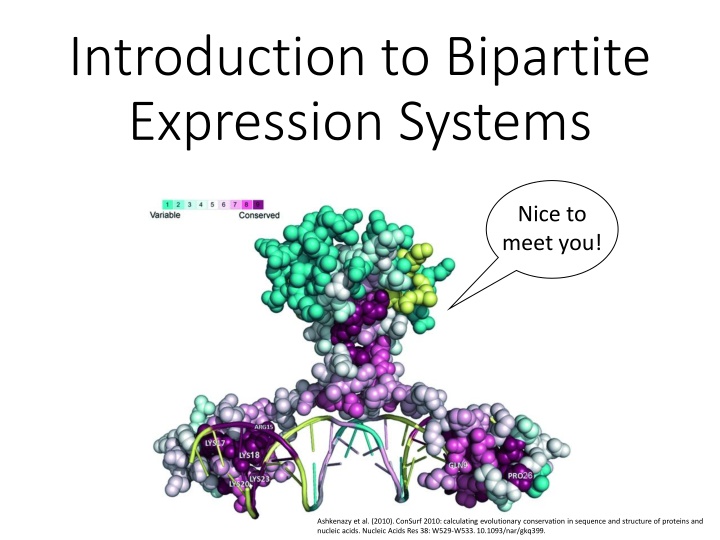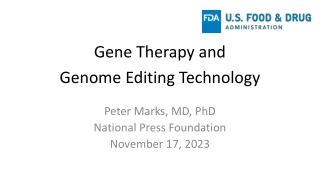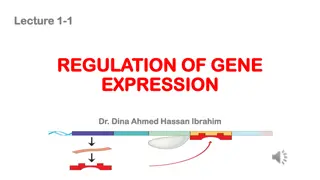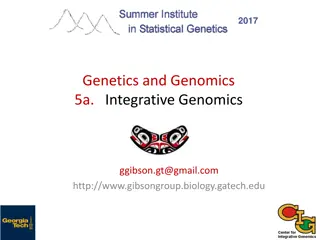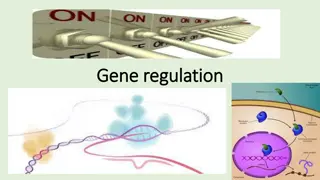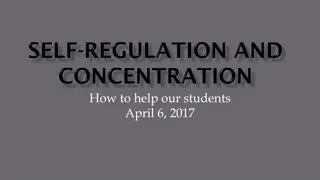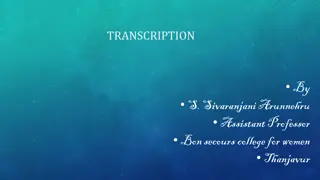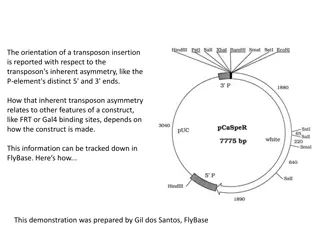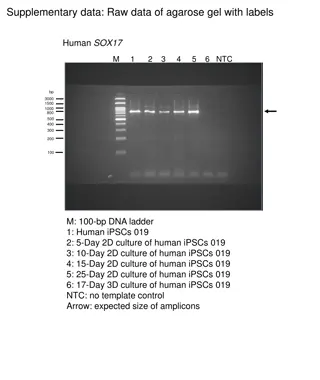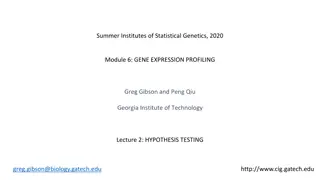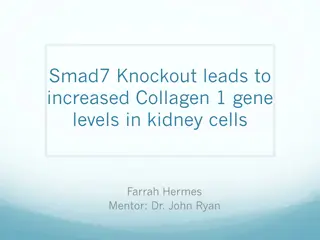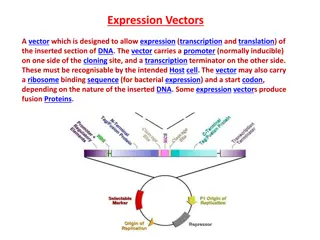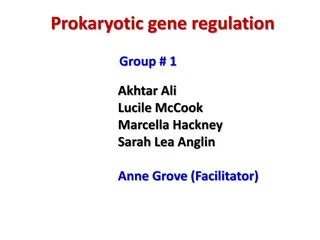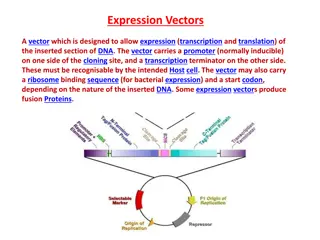Bipartite Expression Systems: Regulation of Gene Expression
DNA contains promoters where RNA polymerase binds to initiate gene transcription. Explore the regulation of gene expression from skin cells to neurons. Learn about the Gal4/UAS system in manipulating gene expression and assessing phenotypes in various organisms.
Uploaded on Feb 20, 2025 | 0 Views
Download Presentation

Please find below an Image/Link to download the presentation.
The content on the website is provided AS IS for your information and personal use only. It may not be sold, licensed, or shared on other websites without obtaining consent from the author.If you encounter any issues during the download, it is possible that the publisher has removed the file from their server.
You are allowed to download the files provided on this website for personal or commercial use, subject to the condition that they are used lawfully. All files are the property of their respective owners.
The content on the website is provided AS IS for your information and personal use only. It may not be sold, licensed, or shared on other websites without obtaining consent from the author.
E N D
Presentation Transcript
Introduction to Bipartite Expression Systems Nice to meet you! Ashkenazy et al. (2010). ConSurf 2010: calculating evolutionary conservation in sequence and structure of proteins and nucleic acids. Nucleic Acids Res 38: W529-W533. 10.1093/nar/gkq399.
Regulation of Gene Expression What makes a skin cell different from a neuron? Or a GABAergic neuron different from a cholinergic neuron? Etc Image credit: Ali Zifan 03:07, 10 July 2016 (UTC) [CC BY-SA (https://creativecommons.org/licenses/by-sa/4.0)]
DNA contains sequences called promoters. These areas are where RNA polymerase and transcription factors bind to start transcription of a gene. If the conditions in a cell are such that a certain promoter region is accessible and the transcription factor protein is present, the gene is transcribed. Image credit: Addgene educational resources
Gal4/UAS Upstream Activation Sequence Transcriptional activation system in yeast Pego & Smeekens. (2001). Plant fructokinases: A sweet family get-together. Trends in plant science. 5. 531-6. 10.1016/S1360-1385(00)01783-0.
Gal4/UAS in Drosophila Gal4 under the control of a specific promoter UAS upstream of desired gene Image credit: https://www.sciencedirect.com/topics/biochemistry- genetics-and-molecular-biology/gal4-uas-system
Using the Gal4/UAS System CG3665 Determine gene expression patterns Stick Gal4 sequence into the fly s DNA Cross to a reporter gene Where does it show up? Image credit: http://flweb.janelia.org/cgi-bin/flew.cgi
Using the Gal4/UAS System Manipulate a known gene and assess the phenotype Knockdown gene expression is reduced Overexpression (ectopic expression) gene is expressed at higher than normal levels Expression of truncated or otherwise unnatural forms of the gene Gal4 only (control) Gal4 + eyeless RNAi Image credit: https://stockcenter.vdrc.at/control/library_rnai
Using the Gal4/UAS System CG3665 Manipulate neuronal activity Cross Gal4 driver to something that changes neuronal activity Silence neurons Tetanus toxin Inhibitory channels, e.g. inwardly rectifying potassium Activate neurons Optogenetic activation of excitatory channels Image credit: http://flweb.janelia.org/cgi-bin/flew.cgi
Multidendritic (md) Sensory Neurons Turner et al., 2016, Current Biology 26, 3116 3128 http://dx.doi.org/10.1016/j.cub.2016.09.038
Practice Today Setting up a genetic cross to use the Gal4/UAS system Identifying phenotypic markers (including fluorescent markers in larvae) Viewing Gal4 + UAS- reporter lines (microscope room, 1 group at a time) Image credit: Chun Han
